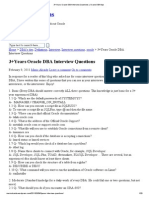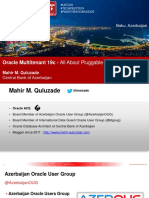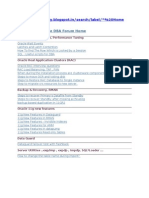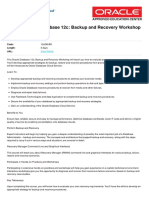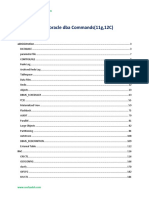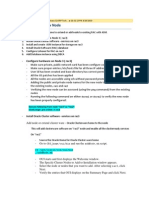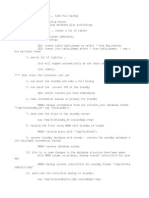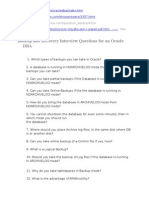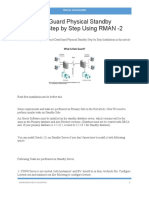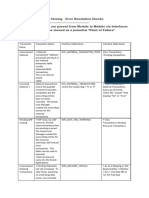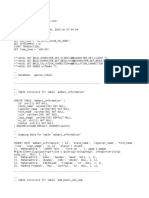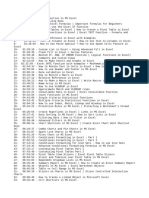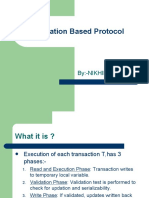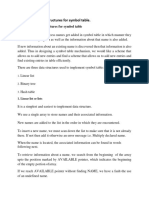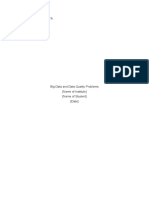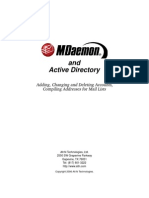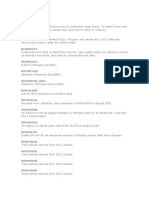0% found this document useful (0 votes)
836 views5 pagesOracle 19c: Install & Upgrade Guide
This document provides an overview of installing and upgrading Oracle Database 19c. It discusses planning the installation, configuring the operating system, installing Oracle Grid Infrastructure, installing the Oracle Database software, creating a database using DBCA, using Oracle Restart, preparing for and performing an upgrade to 19c, required post-upgrade tasks, and migrating data using Oracle Data Pump. The document is divided into 11 chapters that cover topics such as installation requirements, pre-upgrade tasks, manual and automated upgrade methods, and migrating from non-CDB to CDB deployments.
Uploaded by
Jesvss VargasCopyright
© © All Rights Reserved
We take content rights seriously. If you suspect this is your content, claim it here.
Available Formats
Download as PDF, TXT or read online on Scribd
0% found this document useful (0 votes)
836 views5 pagesOracle 19c: Install & Upgrade Guide
This document provides an overview of installing and upgrading Oracle Database 19c. It discusses planning the installation, configuring the operating system, installing Oracle Grid Infrastructure, installing the Oracle Database software, creating a database using DBCA, using Oracle Restart, preparing for and performing an upgrade to 19c, required post-upgrade tasks, and migrating data using Oracle Data Pump. The document is divided into 11 chapters that cover topics such as installation requirements, pre-upgrade tasks, manual and automated upgrade methods, and migrating from non-CDB to CDB deployments.
Uploaded by
Jesvss VargasCopyright
© © All Rights Reserved
We take content rights seriously. If you suspect this is your content, claim it here.
Available Formats
Download as PDF, TXT or read online on Scribd
/ 5






